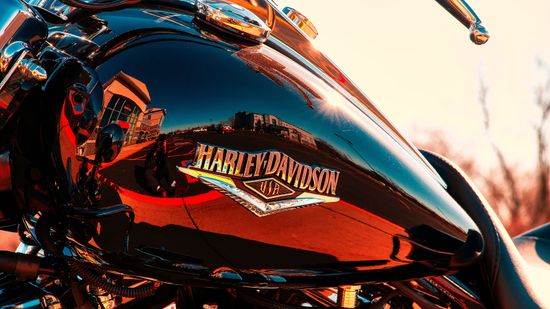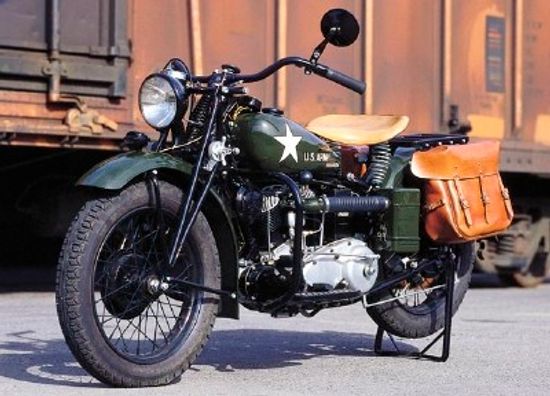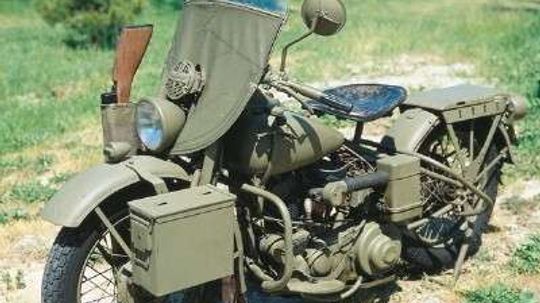Motorcycle Information
Explore the systems and components of motorcycles and see how they’re built. Learn about motorcycles at HowStuffWorks.

1994 BMW R1100RSL

1965 BMW R-27

1990 BMW K-1

1949 BSA B33

1966 BSA A65 Spitfire

1969 BSA Rocket 3

1970 Ducati 350 Scrambler

1977 Ducati 900SS

1998 Ducati ST2

9 Harley Davidson Frame Types Rumbling Down the Highway

Hog Wild: Harley-Davidson Logos Through the Years

2002 Harley-Davidson FXDWG3

1984 Honda Nighthawk 700S

1998 Honda Valkyrie

1969 Honda Dream 305

1942 Indian 741 and Indian 841

1940 Indian 440

1946 Indian Chief

1982 Kawasaki KZ1000R

1977 MV Agusta 750S America

1986 Suzuki GSXR750

1986 Suzuki RG 500 Gamma

1966 Suzuki T10

1975 Triumph Trident

1976 Triumph Bonneville

1952 Triumph Thunderbird

1981 Yamaha 1100 Midnight Special

1985 Yamaha RZ 500

1997 Yamaha Royal Star Palamino Edition

1951 Vincent HRD Series B Rapide

1915 Iver Johnson

1961 Velocette Venom
Learn More / Page 6
The 1998 Ducati ST2 aimed for the sport-touring crowd but offered expected Ducati speed and performance. The bike also included a digital display for fuel level engine temperature and time of day. See pictures and learn about the Ducati ST2.
The 1911 Excelsior motorcycle was a product of Schwinn better known for bicycles. As was common for the era, the single was driven by a wide leather belt with progress slowed by a rear coaster brake. Learn about the 1911 Excelsior motorcycle.
The 1915 Harley-Davidson 11F motorcycle had an advanced-for-its day 11-horse F-head V-twin engine. A proper three-speed transmission was offered along with a magneto and electric lighting system incorporating a taillight. Read about this historic Harley.
Advertisement
The 1916 Harley-Davidson J motorcycle was a leap forward in style with a longer lower appearance. Other than the kickstarter, however, there were few mechanical changes of note for this year. See pictures and learn about the 1916 Harley J.
The 1925 Harley-Davidson JD motorcycle introduced Harley's familiar tear-drop-shaped fuel tank. Sidecars were popular accessories of the day as these vehicles often served as a family's primary form of motorized transportation. Read about the Harley JD.
The 1927 Harley-Davidson BA was a single-cylinder motorcycle that was economical but sold poorly. Two versions of the single were offered: a flat-head with eight horsepower and an overhead-valve variant producing twelve horsepower. Read about the Harley BA.
The 1934 Harley-Davidson VLD motorcycle helped Harley survive the Great Depression. The Great Depression killed off all the major U.S. motorcycle manufacturers except for Harley-Davidson and Indian. Learn about the classic 1934 Harley-Davidson VLD.
Advertisement
The 1936 Harley-Davidson EL motorcycle introduced the famous Knucklehead engine to the Harley line. It became one of the most popular Harley-Davidson models of all time. See pictures and learn more about the Harley EL.
The 1938 Harley-Davidson UL motorcycle featured a Flathead V-twin instead of the newer Knucklehead. It was a Sport Solo model with new colors and striping available. See pictures and learn about the Harley UL.
The 1942 Harley-Davidson WLA motorcycle and Harley-Davidson XA motorcycle were weapons of World War II. Wearing the requisite Olive Drab paint, these were 45-cubic-inch V-twins fitted with special wartime equipment. Learn about these Harleys.
The 1948 Harley-Davidson FL motorcycle introduced Harley's overhead-valve Panhead engine. More chrome trim pieces gave the bikes a fancier look and a steering-head lock was added. See pictures and learn about the Harley FL motorcycle.
Advertisement
The Harley-Davidson S-125 motorcycle was a popular civilian bike in the wake of World War II. Producing only three horsepower, the S-125 had a tough time reaching 55 miles per hour. See pictures and learn more about the Harley S-125.
The 1948 Harley-Davidson WL motorcycle was one of the last Harleys with a small V-twin. It proved to be a versatile engine that remained in production for more than four decades. See pictures and learn more about the 1948 Harley-Davidson WL.
The 1920 Ace motorcycle had a short life, but it was a powerful and durable bike. Production ceased in 1922 due to financial setbacks and the death of its creator in a motorcycle accident. Learn about the 1920 Ace.
The 1970 BSA Lightning motorcycle battled faster less-expensive Japanese bikes. BSA didn't survive long afterward as the competition from Japan proved too much. See pictures and learn how the BSA Lightning dealt with its rivals.
Advertisement
It could be the distinctive body styling, or maybe it's that tellatale sound. There's just something about Harley-Davidson motorcycles that hundreds of thousands of folks can't resist. Find out all about this motorcycle icon.
There is no denying that a Harley-Davidson motorcycle has a unique sound. So makes a Harley sound different from other motorcycles?
















